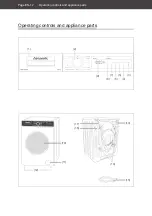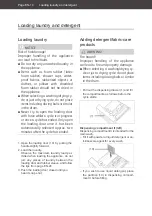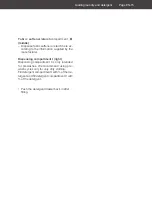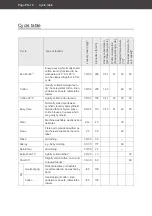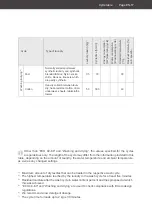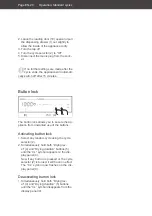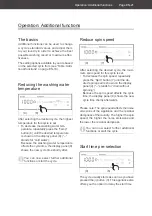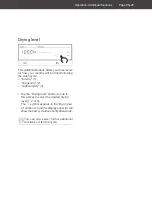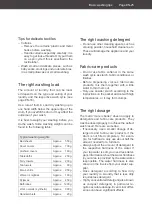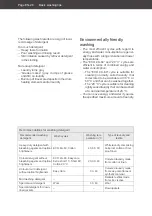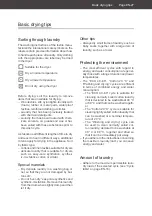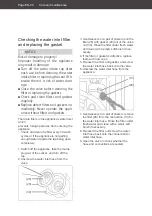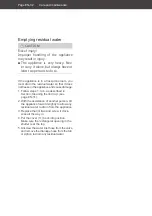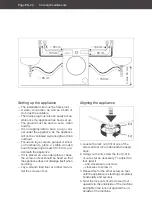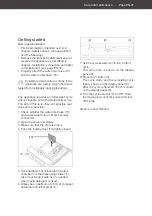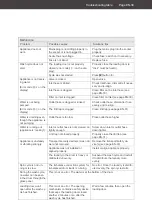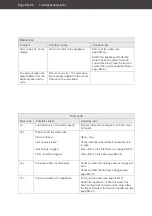
Basic washing tips
Page EN-25
Tips for delicate textiles
– Curtains
– Remove the curtains’ plastic and metal
hooks before washing.
– Handle curtains especially carefully; it is
easy to get loose threads. Only put them
on a spin cycle if this is specified in the
textile label.
– Wash small and delicate pieces, such as
baby socks, stockings and underwire bras,
in a small pillowcase or small washbag.
The right washing load
The amount of laundry that can be load-
ed depends on the type and soiling of your
laundry and the respective wash cycle (see
page EN-16).
As a rule of thumb: Load dry washing up to
one hand width below the upper edge of the
drum. If you overfill the drum, it may affect the
outcome of your wash.
It is best to weigh your washing before you
do the wash. Some washing weights can be
found in the following table:
Typical washing weights
Bed sheets
Approx.
550 g
Duvet covers
Approx.
700 g
Cushion covers
Approx.
180 g
Tablecloths Approx.
250
g
Terry towels
Approx.
200 g
Tea towels
Approx.
90 g
Men’s shirts
Approx.
250 g
Women’s nighties
Approx.
180 g
Pyjamas Approx.
450
g
Bathrobes Approx.
1200
g
Work overalls (synthetic)
Approx.
300 g
Handkerchiefs Approx.
20
g
The right washing detergent
– Do not use other cleaning agents, such as
scouring powder, household cleaners, etc.
These will damage the appliance and your
laundry.
Fabric-care products
– Do not use fabric softener in the same
wash cycle as starch, fabric conditioner, or
finishes.
– Before dispensing viscous fabric-care
products, mix them together with a little
water to thin them out.
– Only use powder starch according to the
instructions on the packet and not with high
temperatures, or it may form clumps.
The right dosage
The motto “more is better” does not apply to
detergents and fabric-care products. They
must be dosed properly to achieve the perfect
wash result. Here are some tips:
– If necessary, use a smaller dosage of de-
tergents and fabric-care products if the
drum is not filled completely. For exam-
ple, for half loads, only use about half the
amount needed for a full drum.
– Always adjust the amount of detergent to
the respective hardness of the water. If
your tap water is soft, you need less deter-
gent. Information about the water hardness
in your area is provided by the waterworks
responsible. The water hardness is also
shown on the invoice from your water sup-
plier.
– Dose detergent according to how dirty
your laundry is. Laundry that is less dirty
requires less detergent.
– Highly concentrated detergent (also known
as compact detergent) in particular re-
quires accurate dosage. Even minor differ-
ences can have significant effects.
Summary of Contents for HWD75T214DE
Page 88: ......


